Similar Posts
Lets now look at the nous as an organ of perception.
In speaking of the soul, according to its different faculties, we tend to create a fragmented notion of it as consisting of mutually exclusive layers, rather than as an interrelated whole. Therefore, we tend to forget that the nous permeates all of man. Even though it is the innermost aspect of man, the eye of the heart, the “border” between the created and Uncreated, the spirit in him, having close affinity to the Spirit, to be distinguished from soul or his emotive dimension. Nevertheless, its activity reaches out to all of his faculties.
The nous, to the extent that it is purified through prayer and repentance, becomes truly the eye of the heart, and charioteer of the soul, directing reason, the passible aspect of the soul, and the senses. It apprehends truth, spiritual realities, and things intelligible, in a direct fashion, intuitively. It then communicates this knowledge to the reason, in the articulation of concepts, or to the imagination, in man’s creative activity of manufacturing. Both of these modes of expression, whether pertaining to the faculties of reason or imagination, are traditionally understood as involving art, that is, a given skill which provides for either physical, or spiritual needs. Iconography then is one of the arts, having the spiritual function of aiding man in his deification, through symbolic encounter with the incarnate Logos, the Archetype. The interrelatedness of the soul’s faculties is described by Ilias the Presbyter, “…Being products of the reason [thoughts], they uses the imagination as a ladder, and so ascend from the world of the senses to the intellect (nous), conveying to the latter the observations which they have derived from sense-perception; then they redescend from the intellect down to the world of the senses, communicating to it the intellect’s principles.”[i]
Here we see the dynamic of interrelatedness and a pattern that has implications pertaining to the creative act in iconography. When Ilias says that the imagination (intrinsic image-forming faculty) “communicates” to the observations of sense-perception the intellect’s principles, this can be seen as a process of imprinting in the creative act. That is, the images of sense-perception are imprinted by the imagination after the intellect’s principles have been communicated to it. Instead of talking of the imprinting of the imagination as coming directly from “above” as the glossary description does, this passage looks at it from “below,” as a process of ascent. In it can be seen a way of speaking of the transfiguration of sense-perception in the creative act. In other words, it suggests the possibility of not having solely to rely on the illuminations coming from above to depict the archetypes.
We can also depict these from artistic models and Nature, seeing them through the “new eyes” of the heart that the integrated knowledge of the timeless pictorial principles of the canon gives us. In the case of iconography what Ilias the Presbyter calls “the intellects principles,” can be seen as the pictorial principles of the canon. Thereby, sense-perception is uplifted and transfigured from outward appearance by bringing out of it the apprehension of archetypes in symbolic representation. Perhaps, this explains why some Byzantine icons are paradoxically at once as if observed from life, almost having a kind of “naturalism” and classical in their gracefulness, yet wholly other-worldly, not merely sensual. The frescoes and mosaics of the church of Chora in Constantinople exemplify this tendency. The “naturalism” apparent in these frescoes can be seen as a synthesis of observation from Nature, and classical Hellenic models.
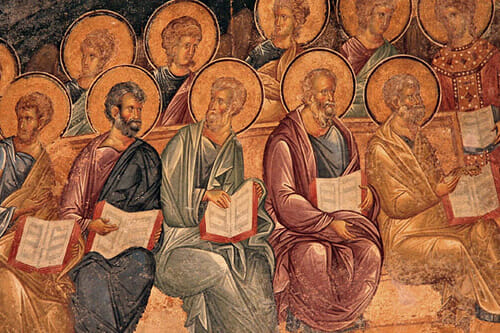
Compare the “naturalism” in this frescoe with the abstract style of the early Spanish manuscript below.
This process can also be seen in the articulation of icons of saints that are contemporary and recently canonized. In this case, of course, a new prototype would have to be articulated from memory, photographs or naturalistic depictions of the saint that record his outward semblance. These would then have to go through a process of transfiguring, based on the traditional pictorial principles, which help to bring out of outward semblance the intrinsic characteristics of the saint in his deified state, as seen on his countenance. This iconic depiction can be arrived at quickly or can take years, and it can result from the work of one or many iconographers gradually refining the symbolic representation. The latter would be an example of communal illumined creativity, each iconographer contributing his level of clarity of noetic vision, until a prototype is arrived at through organic consensus, thus becoming transmitted knowledge. In this case we would also have what St. Nectarios has in mind.
In the creative act of transfiguring Nature, as Ilias points out, the imagination serves as a ladder, through which images ascend and descend, after they have been imprinted by the intellect. Perhaps we can speak of the imprinting as an intuitive or suprarational activity, after which the transfigured image, as seen in the heart, becomes the “pattern seen on the mountain” and then depicted. And it can be said that this unfolds without the painter necessarily being aware that he is in a state of “contemplation” proper. Even though throughout the whole process he is in fact apprehending the invisible in the visible, and “pondering things in the heart,” as to determine artistically how to best outwardly manifest or symbolize the image within him.
As Plato says, “Law and art are children of the intellect (nous).”[ii] The creative act is an intellectual activity, in so far as the observations of sense-perception are “transfigured,” by the spiritual knowledge of the nous or its principles. This knowledge presupposes purification, participation in the Tradition, its established formal and symbolic language of archetypes, and through these the acquiring of “new eyes” to see. As Philip Sherrard says, “Sacred art, then is an attestation of the axiom, Ars sine scientia nihil, without knowledge there is no art- where the scientia or knowledge referred to is unambiguously knowledge of divine sacred realities.”[iii]
Of the importance of image, or icon, as “support” for contemplation, St Theodore says, that through images we “ascend to intellectual contemplations… Imagination is then one of the five faculties of the soul, and imagination itself seems to be a kind of image; for they are both manifestations. The image is not unprofitable therefore, since it is a help to the imagination. If the image were unprofitable, then the imagination which depends on it and co-exists with it would be even more useless, and if it is useless, then so too would be the faculties that co-exist with it – the senses, opinion, understanding, the intellect.”[iv] Here we find a clear example of the necessity of images and hence the imagination, since there is an interdependence between them, and also of the interrelatedness of the soul’s faculties. This passage also suggests that the iconic image, through its anagogic pictorial principles, helps the imagination focus on sacred realities, thereby being guarded from dispersive thoughts and fantasy. This then helps the soul to ascend to spiritual reflection in the act of prayer. It also appears to me that what St. Theodore has in mind when speaking of “intellectual contemplation” is something along the lines of what was stated above, a kind of “being mindful of” and of “pondering in the heart” the mysteries of the Faith.
The transfiguring of sense-observation in the creative act involves “abstracting the universal from the particular.” For example, by taking a group of chairs of different kinds of materials, textures, designs, colors, or construction, and in bypassing their outward appearance or shape to what they all have in common, their universal traits, we arrive at the idea of chair. That is, we begin to see the immanent archetype as intelligible instance. I would say that the idea is a noetic apprehension of the archetype as intelligible universal principle, which is immanent in all the particularized instants of each chair, or any given kind of thing in Nature. According to the fifth century Chinese painter, Hsieh Ho, this process of “abstracting” was also the aim in the best examples of their tradition, “The painters of old painted the idea (i) and not merely the shape (hsing).”[v] In abstracting the universal we arrive at a linear, flat, dematerialized, simplified, and geometric stylization. Geometry can be seen in the icon, not only in the depiction of persons and objects, but also in its compositional substructure. But, it should not be overlooked that this “abstracting” is not to lead to a mechanical or dead geometrization, but should also involve capturing the life in the thing depicted, its “spirit,” given by the Giver of Life. Hsieh Ho also says that the work of art must reveal, “the operation (yun) of the spirit (ch’i) in life-movement,” and again “By means of natural shape (hsing) represent divine spirit (shen).”[vi] In the principles of iconography rhythm in line and composition are crucial in capturing the “life-movement.”
As I have said before, we should not consider the universal principle in a dualistic manner as a way of escape from the inherently evil world of matter to an abstract celestial world. There might be “higher” and “lower” levels in the cosmos, but they interpenetrate each other, and the Logos is above all, through all, and in all, radiating His goodness as the ground of being.[vii] The archetype as universal principle can be compared to a prism, through which the Uncreated light passes and refracts into different colors, the variously shaped particular instances, which all declare uniquely the glory of God.[viii]
The process of abstracting the universal from the particular can be seen in the iconographic tradition between two poles, which are both legitimate stylistic interpretations of the immanent archetype. On one hand, styles leaning towards naturalism (Palaeologue, Cretan). On the other hand, a more severe “primitive” abstract style (Mozarabic, Celtic). In the middle would be a balancing of both elements as seen in the Russian schools of the 14th and 15th centuries (Novgorod,Tver).
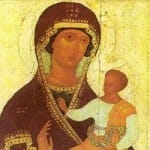
Mother of God Hodigitria, Russian 1502-3. Here we have balance between naturalistic and abstracting tendencies.
These two extremes approach the immanent archetype from different angles. One predominantly focuses on its material manifestation and the other on its intelligible dimension. The first, in emphasizing the particularized instance, would be concerned with the features of the saint as individual, and therefore this kind of icon in its details would appear to be a portrait painted from life. The second, in emphasizing the universal domain, such as manhood or Man, would tend to depict in general terms, and thus each saint in a group would come across as almost identical. This tendency is clearly seen in some Mozarabic illuminations of the Revelation, where the elders surrounding the Lamb are barely indistinguishable. However, in being an affirmation of the Incarnation, the icon does not allow for a style to deteriorate into either extreme of pure abstraction or coarse naturalism. The first would be a denial of the ontological goodness of matter, its redemption, and the central role of Man as microcosm; the second, in being concerned merely with the fleeting appearance of things subject to corruption, would be overlooking deification and theophany in Creation.
As you suggested the idea can be seen as more “concrete,” it remains, whereas the various shapes and materials perish, are impermanent, subject to transience. Another way of saying “concrete” would be incorruptible, eternal. Hence we can also speak of the “noetic vision of the archetypes” as seeing through the eye of the heart, not the mere shape of a thing, according to corruption or the “garments of skin,” but according to its eschatological perfection and permanence. It is seeing things transfigured, clothed in immortality, the state intended for them from the beginning, in which God is all in all. This tends at times towards simplification and the geometric, not because the archetypes are an abstract geometry per se (I would not venture to speculate on how the “look like” in the Logos, since we can say nothing of their essence) but because in geometry, as Plato sensed when speaking of the principles symbolized in the five regular polyhedrons, we find expressions of formal perfection, or what I would call eschatological permanence.[ix] In the Revelation of St. John the Theologian the notion of permanence, stability and perfection, are geometrically expressed by the image of pure crystallization in the streets, the strong walls, foundations, and cubic shape of the Heavenly Jerusalem. It’s shining forth in uncreated light is symbolized by gold, pearls, and the translucence of its precious stones.[x]
In geometry we find reflected the higher, intelligible realm of being, which transcends the phenomenal, helping to elevate our minds to consider the source of its beauty, the divine Intellect (Logos). Therefore geometry serves an anagogic function in iconography. The icon being articulated by intellect (nous), and reflecting things intelligible, that is, “inner things,” the esoteric and immaterial level of existence, becomes a symbol of the heavenly realm. As the Lord says, “The kingdom of God is within you.”[xi] In the following passage Coomaraswamy speaks about Plato and of his view of things geometric:
“The beauty of the admirable equation is the attractive aspect of its simplicity. It is a single form that is the form of many different things. In the same way Beauty absolutely is the equation that is the single form of all things, which are themselves beautiful to the extent that they participate in the simplicity of their source. ‘The beauty of the straight line and the circle, and the plane and solid figures formed from these… is not, like that of other things, relative, but always absolutely beautiful.’ Now we know that Plato, who says this, is always praising what is ancient and depreciating innovations (of which the cause are, in the strictest and worst sense of the word, aesthetic), and that he ranks the formal and canonical arts of Egypt far above the humanistic Greek art that he saw coming into fashion. The kind of art that Plato endorsed was, then, precisely what we know as Greek Geometric art. We must not think that it would have been primarily for its decorative values that Plato must have admired this kind of “primitive” art, but for its truth and accuracy, because of which kind of beauty that is universal and invariable…”[xii]
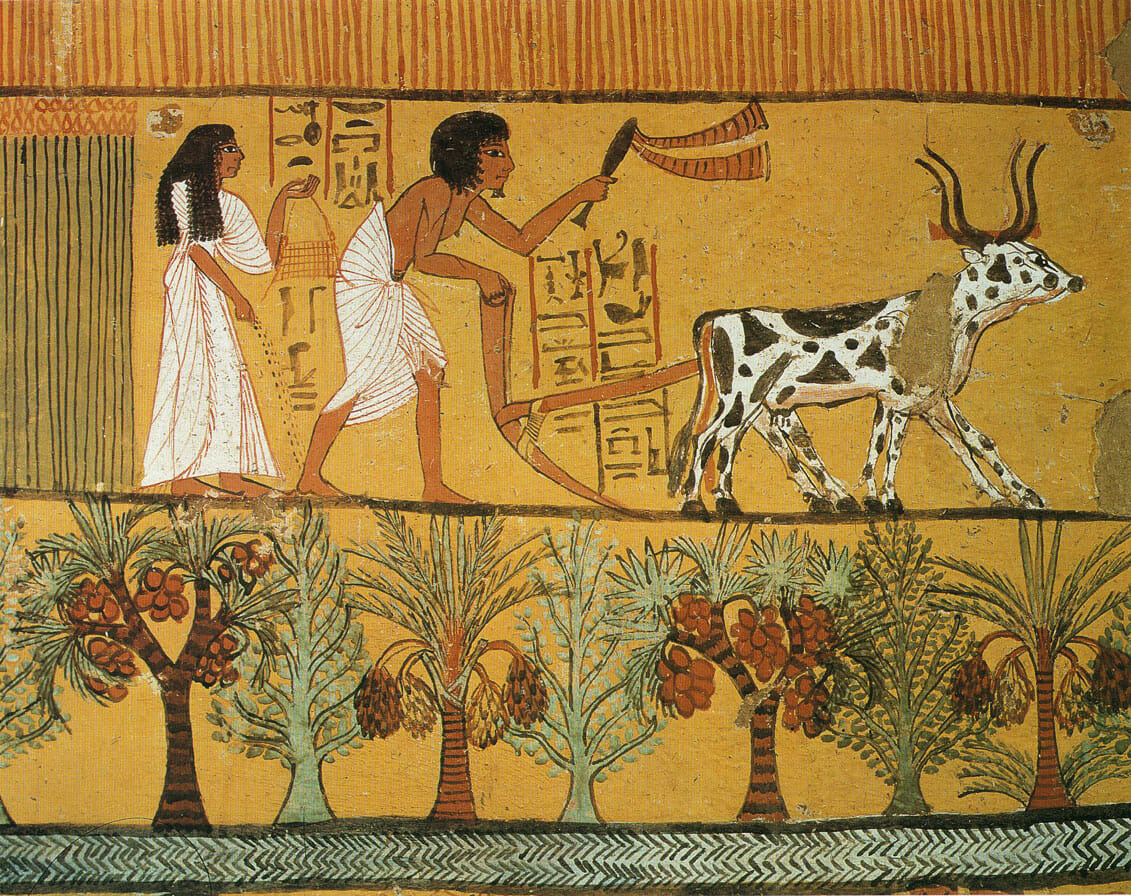
In this one example we can see how the pictorial principles we have been discussing have been universally acknowledged in the sacred art of other cultures.
In other words, Beauty is the Logos, the Archetype of the beauty in created beings, whose archetypes or logoi participate in Him as ground of their being, giving them an ontological goodness and permanence, symbolized by geometry in sacred art.
So as we have seen the term “noetic vision” is fluid and should not be solely thought of as an experience that is totally foreign to us, but as something quite accessible. It is paradoxically far and near. Nevertheless, we should not oversimplify or over-systematize things and strip them of their mystery. It is something that can happen to us suddenly from above, but is also something that we can be engaged in as we speak.
In Christ,
Fr. Silouan
Notes:
[i] The Philokalia Vol. Three, op.cit., p.50.
[ii] See the Timaeus, 28A, 47D, 69D, as quoted by Ananda K. Coomaraswamy, The Essential Ananda K. Coomaraswamy, World Wisdom, Inc., Bloomington, Indiana, 2004, p. 42.
[iii] Philip Sherrard, The Sacred in Life and Art, Denise Harvey (Publisher), Greece, 2004, p.130.
[iv] As quoted by Andrew Louth in the essay, “The Appeal to the Cappadocian Fathers and
Dionysios the Aeropagite in the Iconoclastic Controversy.” In Gregory of Nazianzus: Images And Reflections”. Jostein Bortnes, Tomas Hagg. Museum Tusculanum Press, 2006, p. 280.
[vi] As cited in Coomaraswamy, op. cit.
[vii] Eph. 4:6.
[viii] The word “abstract” tends to have a connotation of mechanical lifelessness, but the word in this context should be taken to mean “an act of drawing from,” or retrieving something that is covered under in order to reveal it. In speaking of the archetypes Sherrard explains, “These realities that sacred art reveals are not abstract, static, impersonal, or other-worldly. On the contrary, they constitute the inner living and energizing plexus of things, their inner being and identity. They are the spiritual archetypes whose intelligible ever-modulating metamorphosis from state to state link the Divine and human, Creator and creation, from the most general to the most particular and intimate. It is this dynamic ever-modulating plexus that sacred art helps to reveal, to disclose and uncover. In other words, sacred art presupposes that ours is a sacred cosmos rooted in the Divine and permeated to its very core by the unseen presence of divine powers whose actuality constitutes its own actual existence…there is this intimate interpenetration of inner and outer, invisible and visible, Spirit and matter…” Sherrard, op.cit. pp.130-3.
[ix] Of Plato’s theory of art C. Cavarnos says, “That painting can and ought to express the ideal is a thought that recurs in the Republic and appears also in the Laws. In the Republic Plato envisions a painter who contemplates divine archetypes and seeks to express through the human figures he paints the ideals of wisdom, courage, temperance and justice. Such an artist looks at the archetypes of these virtues and tries to express them as far as this is possible in line and color, erasing one touch or stroke and painting another, until he succeeds in representing ‘a type of human character that is pleasing and dear to God’. In the Laws the Athenian philosopher praises Egyptian painting because it abides strictly by principle, which he advocates, that the youth should habituate themselves to postures and gestures that are beautiful.
This rejection of naturalism in painting and demand for idealism constitute not only a vindication of Egyptian art, but also a remarkable anticipation of some of the basic principles underlying Byzantine iconography. The Byzantines realized more effectively than any otherrs the spiritual type of painting which Plato vaguely envisioned.” C. Cavarnos, Plato’s Theory of Fine Art, Astir Pub., Athens, Greece, 1973, pp.35-36.
[x] Rev. 21: 9-21.
[xi] Luke 17: 21.
[xii]Ananda K. Coomaraswamy, The Essential Ananda K. Coomaraswamy, World Wisdom, Inc., Bloomington, Indiana, 2004, pp. 27-28.

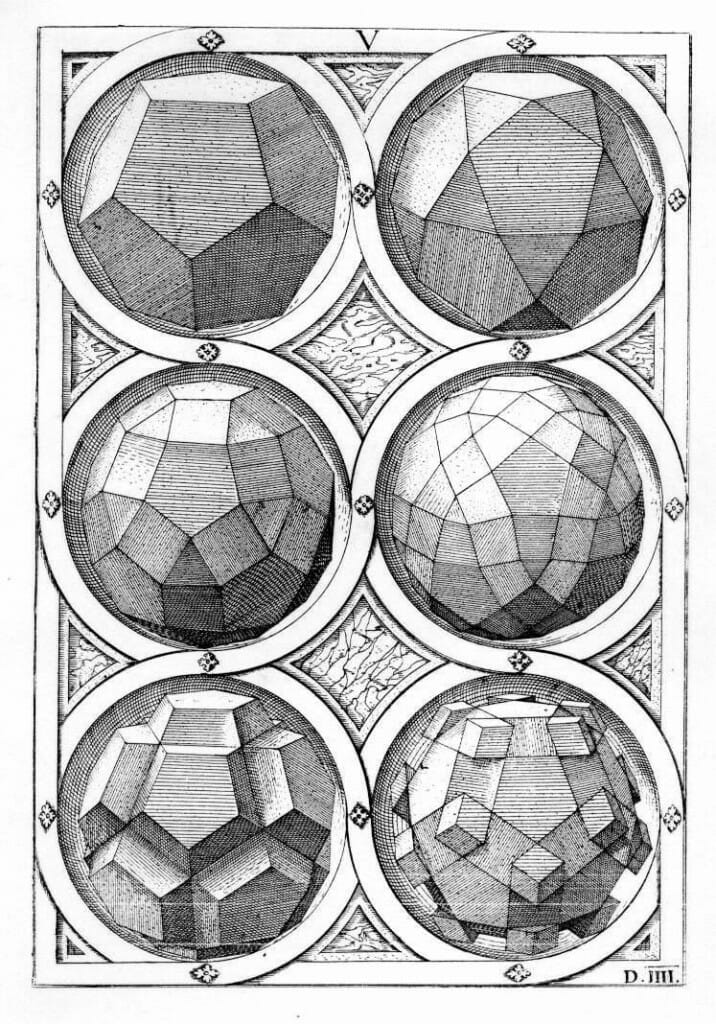
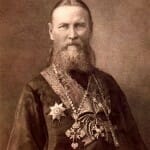
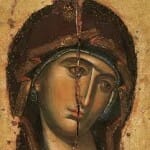
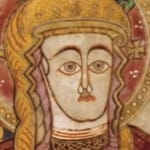
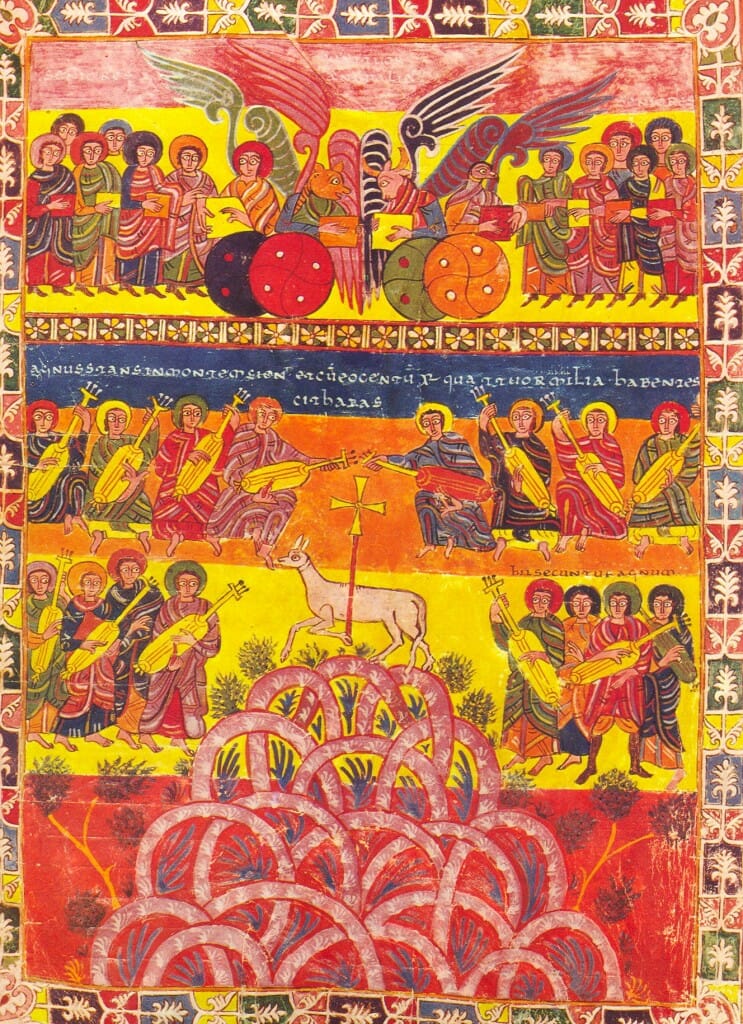
[…] https://orthodoxartsjournal.org/archetype-and-symbol-iii-on-noetic-vision-continued/Monday, May 20th 8:00 amclick to expand… […]